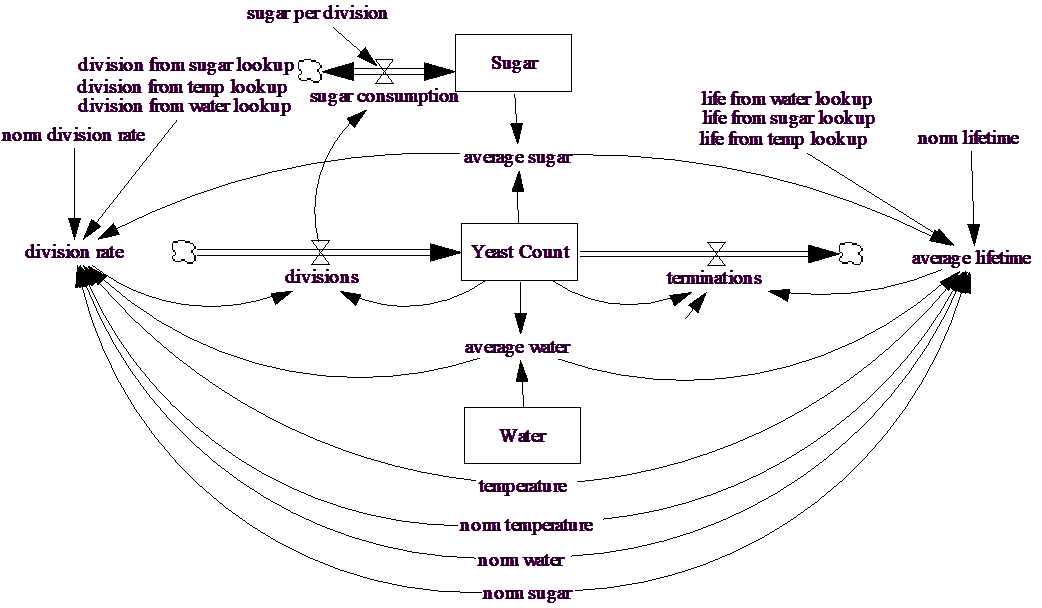Stock and flow representations and standard accounting practice have some fundamental consistencies. Every transaction is a flow, and all flows change stocks. The focus in accounting is on tracking each and every transaction that occurs. We might represent a simple company's accounting system as:

Note that there are no arrows indicating causality coming into any of the rates. The purpose of accounting systems is not to model behavior, but to manage transactions. The causes for those transactions are outside the realm of the accounting system. Also note the lack of clouds or sources and sinks in the above representation. A basic tenet of double entry bookkeeping is that every Debit has an associated Credit and all transactions are required to be balanced. Income Sources and Sales Expenses provide a history of what has happened but they are not part of the company.
A more functional model of our simple company might take the form:

There are several things to notice in the diagram above: Clouds have replaced the end levels; policies (albeit incomplete) have been put in place to determine the rates; and new kinds of variables have been added. The policies in place reflect those of the company (payout time) , those of its customers (receipt time) and those of the sales people in response to receiving good income ( though the sales calls notion is a little more questionable than the other two).